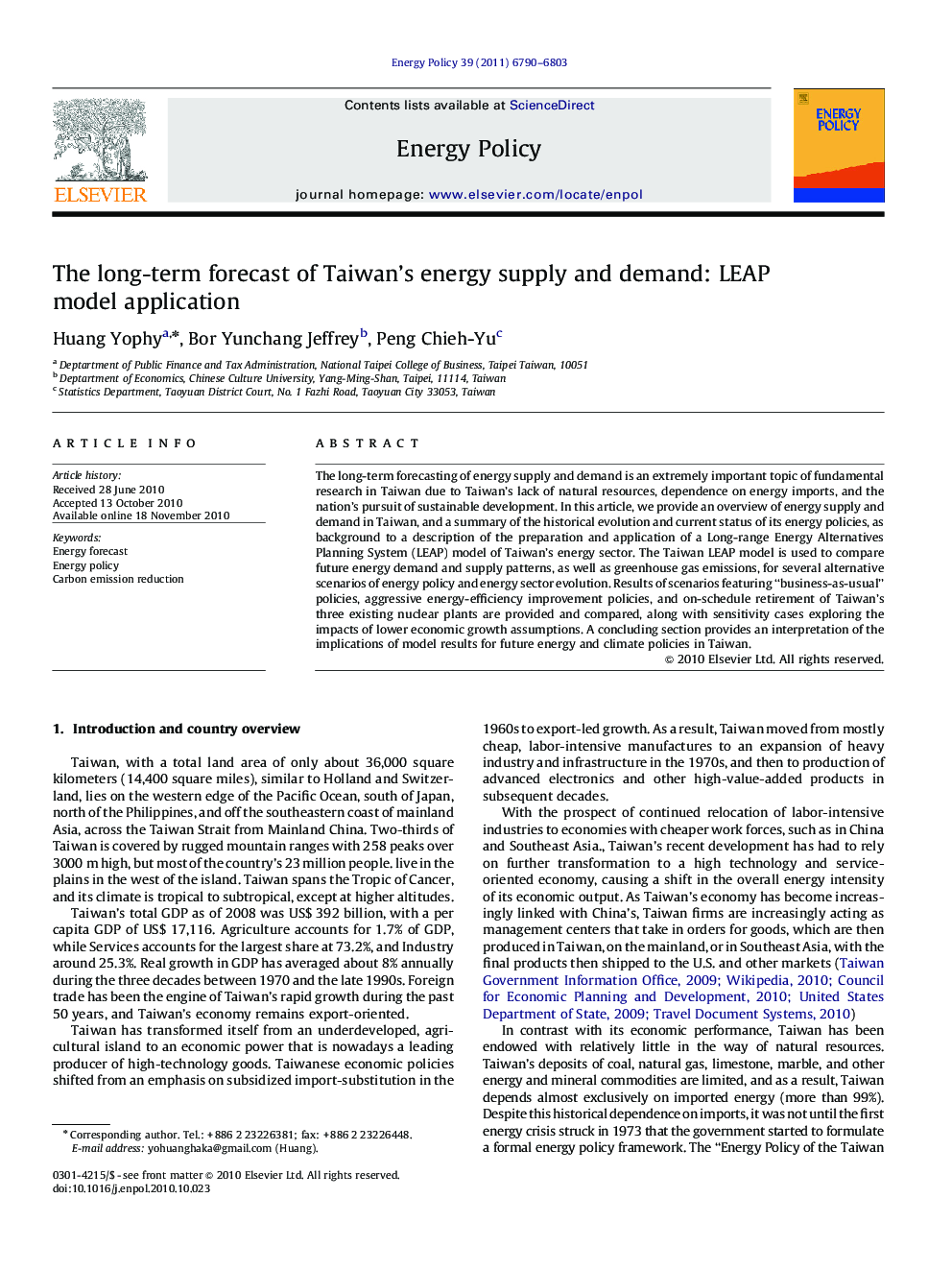| Article ID | Journal | Published Year | Pages | File Type |
|---|---|---|---|---|
| 993349 | Energy Policy | 2011 | 14 Pages |
The long-term forecasting of energy supply and demand is an extremely important topic of fundamental research in Taiwan due to Taiwan’s lack of natural resources, dependence on energy imports, and the nation’s pursuit of sustainable development. In this article, we provide an overview of energy supply and demand in Taiwan, and a summary of the historical evolution and current status of its energy policies, as background to a description of the preparation and application of a Long-range Energy Alternatives Planning System (LEAP) model of Taiwan’s energy sector. The Taiwan LEAP model is used to compare future energy demand and supply patterns, as well as greenhouse gas emissions, for several alternative scenarios of energy policy and energy sector evolution. Results of scenarios featuring “business-as-usual” policies, aggressive energy-efficiency improvement policies, and on-schedule retirement of Taiwan’s three existing nuclear plants are provided and compared, along with sensitivity cases exploring the impacts of lower economic growth assumptions. A concluding section provides an interpretation of the implications of model results for future energy and climate policies in Taiwan.
Research highlights► The LEAP model is useful for international energy policy comparison. ► Nuclear power plants have significant, positive impacts on CO2 emission. ► The most effective energy policy is to adopt demand-side management. ► Reasonable energy pricing provides incentives for energy efficiency and conservation. ► Financial crisis has less impact on energy demand than aggressive energy policy.
